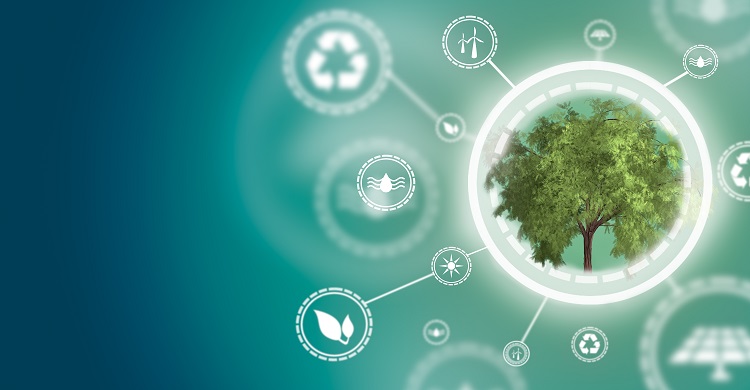 Source: iStock.com/Iván Jesús Cruz Civieta
Source: iStock.com/Iván Jesús Cruz Civieta
Focus on sustainability: Gigaset launches grass packaging
2. June 2020 Published by Raphael DoerrPackaging waste is a growing annoyance for consumers and companies in the context of sustainability and greater ecological awareness. The main focus of that is on plastics. However, every type of packaging leaves its ecological footprint and impacts, for example, the CO2 emissions a company produces. Gigaset is therefore taking a further step in its environmental agenda by introducing an innovative grass packaging for initial products.
Sustainability for Germany and the world
As a company based in Germany, Gigaset has always had to comply with stringent regulations and environmental requirements. It addresses the issue of sustainability in many different facets – from the logistics chain to technological innovations or the strict recycling policy for production materials.
Gigaset has used corrugated cardboard for its packaging for a long time in order to achieve maximum sustainability and also be able to package products in an automated and stable manner. More than 90% of this packaging is currently from recycled material.
A big step toward cutting CO2 emissions was the huge reduction in the size of packaging. Consumers know the trick that has long been used by companies and is still very widespread for detergent or muesli: The packaging is far bigger than what’s in it. It’s a marketing ploy to suggest to consumers that they’re getting more for their money. Gigaset cut that out a long time ago and has continued to reduce the size of its packaging over the past years, also to minimize the use of materials.
Sights set on reducing the CO2 footprint
Above all, Gigaset is committed to systematically reducing its CO2 footprint. The issue of packaging is only one of many elements the company has already addressed to achieve that goal. Gigaset has also taken other measures to improve its CO2 footprint, such as installing new energy-efficient lighting at its production site in Bocholt, systematic recycling of all production materials or planning new green electricity concepts.
The Executive Board’s decision in 2018 to relocate smartphone production to Germany was taken on the basis of various aspects, including with a view to enhancing sustainability. “We have reaped a raft of positive effects by making smartphones in Germany,” says Reinhold Kempkes, COO at Gigaset. “We pressed ahead with digitalization at the site and promoted greater use of man-machine interaction (MMC) as part of our Industry 4.0 project. We have boosted flexibility in production and related logistics processes on a massive scale. We are now able to deliver maximum customizing of our products, especially in response to B2B requests. We can provide service and repairs directly from Bocholt and so create a permanent product improvement cycle. And we can save a lot more space by transporting components we have to buy from Asia in bulk and so likewise reduce CO2.”
Local partners for progress
Production in Germany also means Gigaset can work with partners in Germany or the surrounding region so as to reduce the length of logistics chains and cut CO2 emissions further thanks to short transportation routes. In 2019, Gigaset teamed up with the packaging specialist Gissler & Pass to develop a new, sustainable and local concept for packaging its smartphones. The specifications for the new packaging made of grass paper were styling, functionality and sustainability. The aim is to achieve multiple goals moving forward: to cut CO2 emissions, promote local cooperation, and standardize the packaging materials, designs and concepts.
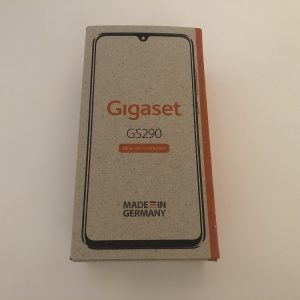
Grasverpackung beim GS290
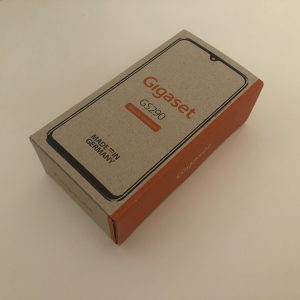
Neues Farbkonzept entwickelt
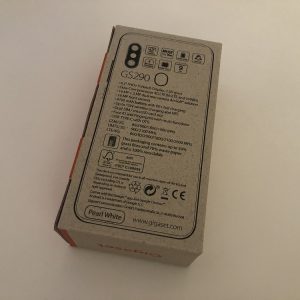
Neue Druckverfahren entwickelt
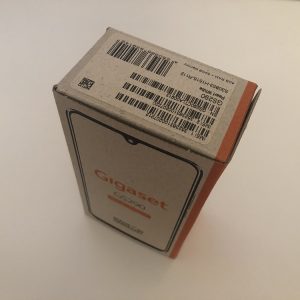
Neue Etiketten-Anbringung entwickelt
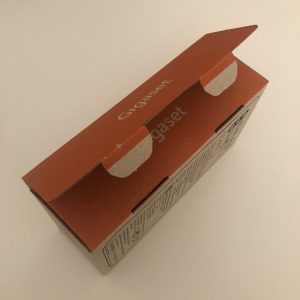
Verzicht auf Klebeverschlüsse
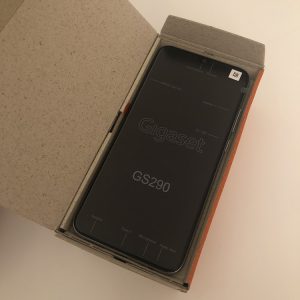
Aufgeräumter Innenraum
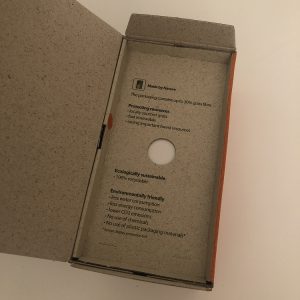
Auch innerer Aufbau komplett aus Grasverpackung
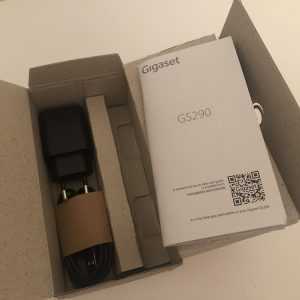
Reduzierte Bedinungsanleitung
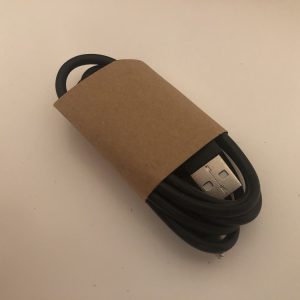
Keine Plastik-Klemmen mehr
Conscious decision for the environment
During the development phase, Marketing asked itself the fundamental question of whether the new design, in other words, the new feel of the packaging, which had a rougher surface due to the use of grass paper, and the natural, ecological color effect would appeal to customers.
“We were worried that customers would rate our packaging as being inferior,” says Jörg Brühl, SVP Marketing at Gigaset. “Glossy lacquered, foil-covered packaging aim to catch shoppers’ eye in a store. YouTubers even pay homage solely to the packaging in what are termed unboxing videos, but the environment pays the price.”
Market research was therefore conducted and the properties of the packaging were optimized in several product cycles. The result was packaging that, according to the market research, is very highly accepted, especially by a young target group that is aware of its ecological responsibility and expects brands to act accordingly. Moreover, it boasts excellent qualities in terms of sustainability, ruggedness and mechanics.
The road to grass paper
Gigaset uses F wave corrugated cardboard instead of the customary E wave variant for its new grass packaging, which is currently used for the GS290 and GX290 models. It combines mechanical advantages while giving the impression of solid cardboard, yet the material needed is reduced. The packaging is fully made of offset-printed grass paper – the inner cover and wave of 140 g of grass paper and the outer cover of 170 g of grass paper.
Grass paper is a locally sourced, rapidly renewable raw material. Less water, energy and chemicals are needed to make it and so it has a better ecological footprint. 30% of the existing cardboard packaging, 90% of which already came from recycled material, has now been replaced by grass paper. The remaining 70% consists wholly of recycled material.
“Grass packaging might sound mundane, but developing it and perfecting it for mass production was a long and challenging road,” says Thomas Lebeus, Material Group Manager at Gigaset. “The grass packaging comprises two parts: the main box with the partition and the inlay. Both parts are punched out and supplied as a flat cutting on pallets. The main box is automatically set upright on the production lines and glued; as part of that, the partition is included as a fold-in tray and so is also the presenter for the upper-lying smartphone. Above the tray, dust flaps round off the lid and are an additional means of preventing the product from falling out. Accessories can be added and arranged below the tray. Like the other accessories, an inlay is inserted when the box is filled by an energy-efficient cobot. Tuck-in flaps enable the box to be closed again and also raise the inlay upright and keep it under tension.”
The process was complex and protracted, but the end result was perfect. The packaging underwent several optimization loops as to obtain an ideal and sustainable overall solution, as a result of which the use of plastic was completely eliminated. The packaging label is likewise made of grass paper and the user guide is fully made of recycled paper. The packaging is FSC certified and recyclable. It represents a major step forward in optimizing our CO2 footprint and living up to our responsibility as a sustainable company.
 Comments
Comments

 en
en 







